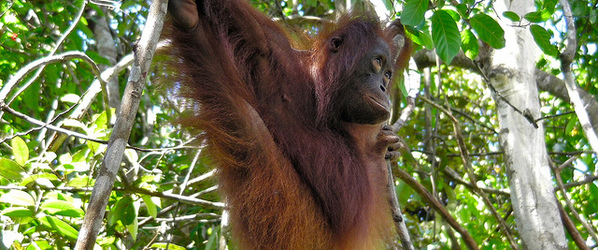Once only monkeys were suffering — now people are getting sick too. Monkey malaria, which is three times more severe than other forms of malaria, now accounts for two-thirds of human malaria cases in Malaysian Borneo, says Balbir Singh, director of the Malaria Research Centre at the University of Malaysia in Sarawak.Other South-East Asian countries such as Cambodia and Thailand are seeing infections too. Signs that monkey malaria may now be jumping directly between humans could lead to a further spike in cases, adds Singh.
The disease is caused by a parasite called Plasmodium knowlesi, transmitted by mosquitoes which usually feed on monkeys’ blood. The parasite was first described in 1932, and it was known that very occasionally people could get infected — for instance, when spending time in the jungle canopy being exposed to bites from mosquitoes that would normally prefer monkeys.
Effective strategies to prevent the spread of all forms of human malaria have cut global cases of the disease by a quarter since the beginning of the century, according to the WHO.
Over the past decade, human malaria cases in Malaysia plummeted due to a century-old malaria control programme, and the country has been hoping to eliminate the disease by 2020.
But in 2004 Singh and colleagues stumbled upon a complication to this goal.
They discovered that many more people were infected with monkey malaria than previously thought. About 58 per cent of malaria cases in the Kapit district of the Malaysian Borneo, the scientists found, were in fact due to the Plasmodium knowlesi.
And since 2008, cases have been soaring further. In 2013, 68 per cent of people with malaria in Malaysian Borneo had monkey malaria, says Singh.
A fall in local people’s immunity due to the success of eradication programmes for more common types of malaria could be to blame, he adds.
“If these mosquitoes are able to breed in human habitats then you suddenly have a problem.”
Janet Cox Singh, University of St Andrews
Another factor could be habitat loss, driving mosquitoes out of the jungle and increasing the chances of transmission to humans, says Janet Cox Singh, a malaria expert at the University of St Andrews, United Kingdom, who used to work with Balbir Singh. “If these mosquitoes are able to breed in human habitats then you suddenly have a problem,” she says.
The illness can be treated with standard malaria drugs, but it is harder to prevent than other forms of the disease: the mosquitoes that carry monkey malaria live outdoors, so insecticide-treated bed nets are useless.
Also, not many poor farmers are likely to buy expensive insect repellent, says Singh. And many may not be willing to wear long-sleeved clothing outdoors all the time, he adds – but these are the only effective ways to cut the risk of infection.
Balbir Singh presented his research at the annual meeting of the American Society of Tropical Medicine and Hygiene in New Orleans, United States, on 3 November.








